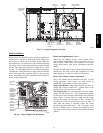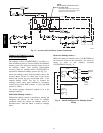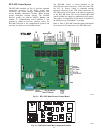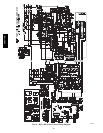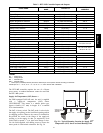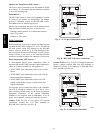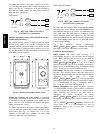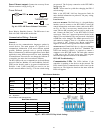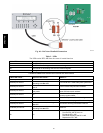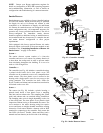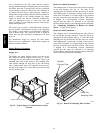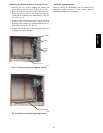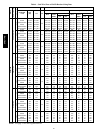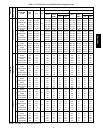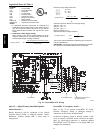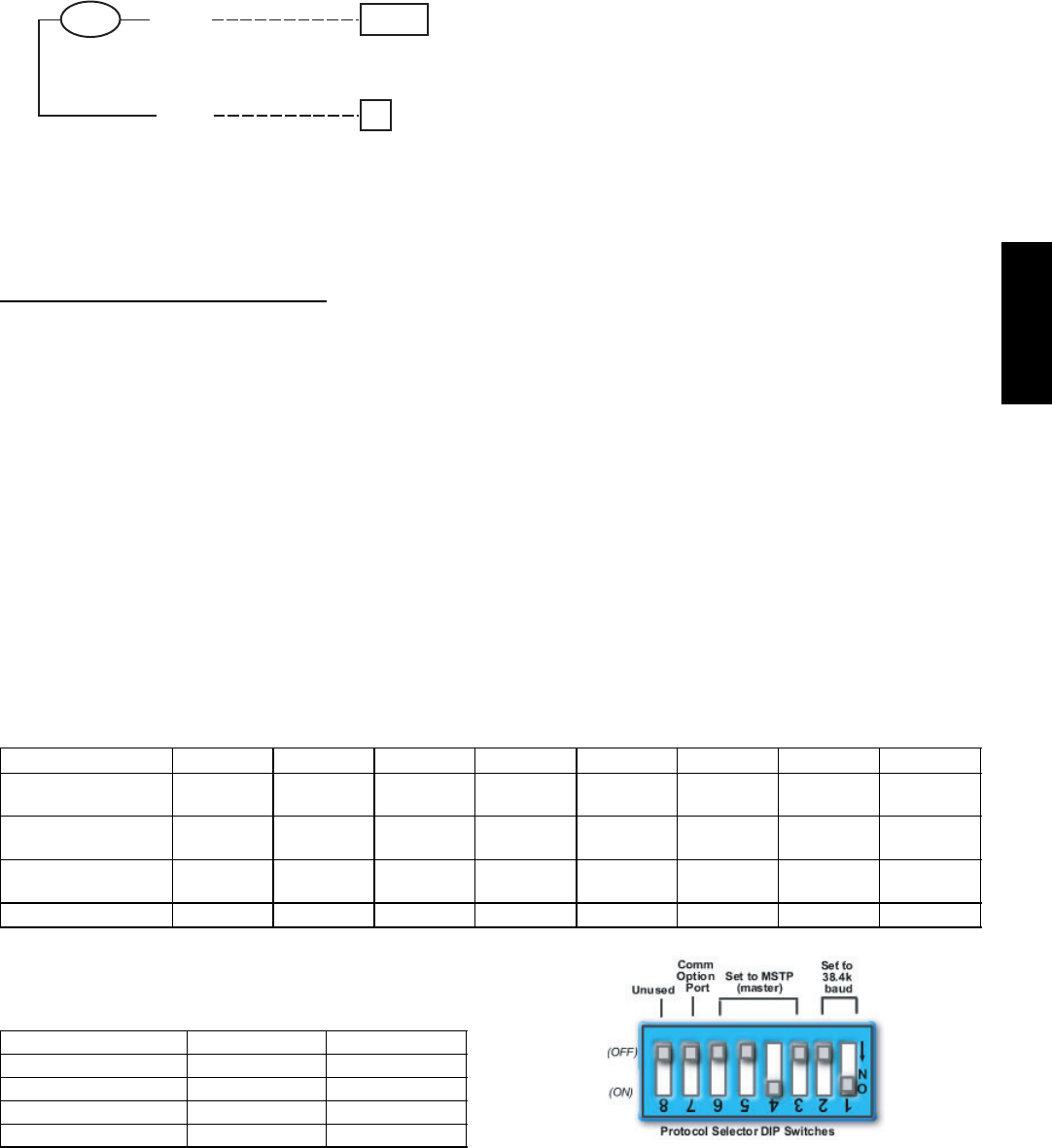
25
Power Exhaust (output): Connect the accessory Power
Exhaust contactor coil(s) per Fig. 46.
Power Exhaust
J11-3
C
TAN
PEC
CTB
THERMOSTAT
GRA
C10362
Fig. 46 -- RTU--MP Power Exhaust Connections
Space Relative Humidity Sensor -- The RH sensor is not
used with 548J*14D models at this time.
Communication Wiring -- Protocols
General —
Protocols are the communication languages spoken by
control devices. The main purpose of a protocol is to
communicate information in the most efficient method
possible. Different protocols exist to provide different
kinds of information for different applications. In the BAS
application, many different protocols are used, depending
on manufacturer. Protocols do not change the function of
a controller; just make the front end user different.
The RTU--MP can be set to communicate on four different
protocols: BACnet, Modbus, N2, and LonWorks. Switch 3
(SW3) on the board is used to set protocol and baud rate.
Switches 1 and 2 (SW1 and SW2) are used to set the
board’s network address. See Fig. 47 for the switch setting
per protocol. The 3rd party connection to the RTU--MP is
through plug J19.
NOTE: Power must be cycled after changing the SW1--3
switch settings.
Refer to the RTU--MP 3rd Party Integration Guide for
more detailed information on protocols, 3rd party wiring,
and networking.
Local Access —
BACview
6
Handheld: The BACview
6
is a keypad/display
interface used to connect to the RTU--MP to access the
control information, read sensor values, and test the RTU,
see Fig. 48. This is an accessory interface that does not
come with the MP controller and can only be used at the
unit. Connect the BACview
6
to the RTU--MP’s J12 local
access port. There are 2 password protected levels in the
display (User and Admin). The user password is defaulted
to 0000 but can be changed. The Admin password is 1111
and cannot be changed. There is a 10 minute auto logout
if a screen is idle. Contact your Bryant applications
engineer for details on navigation and screen content.
Virtual BACview: Virtual BACview is a freeware computer
program that functions as the BACview
6
Handheld. The
USB Link interface (USB--L) is required to connect a
computer to the RTU--MP board. The link cable connects
a USB port to the J12 local access port. This program
functions and operates identical to the handheld.
RTU--MP Troubleshooting —
Communication LEDs The LEDs indicate if the
controller is speaking to the devices on the network. The
LEDs should reflect communication traffic based on the
baud rate set. The higher the baud rate the more solid the
LEDs will appear.
SW3 Protocol Selection
PROTOCOL DS8 DS7 DS6 DS5 DS4 DS3 DS2 DS1
BACnet MS/TP
(Master)
Unused OFF OFF OFF ON OFF Se lect Baud Select Baud
Modbus
(Slave)
Unused OFF OFF ON ON OFF Select Baud Select Baud
N2
(Slave)
Unused OFF OFF OFF ON ON OFF OFF
LonWorks Unused ON ON OFF ON OFF OFF OFF
NOTE:
DS = Dip Switch
BACnet MS/TP SW3 example shown
Baud Rate Selections
BAUD RATE DS2 DS1
9600 OFF OFF
19,200 ON OFF
38,400 OFF ON
76,800 ON ON
C07166
Fig. 47 -- RTU--MP SW3 Dip Switch Settings
548J*14D



